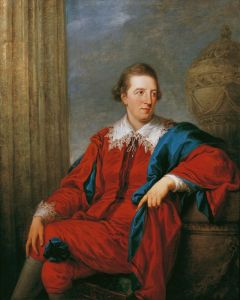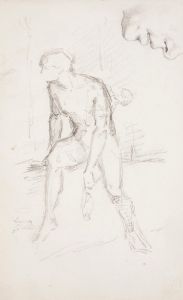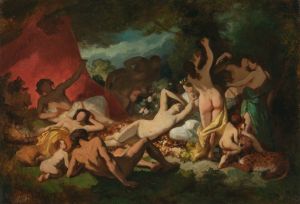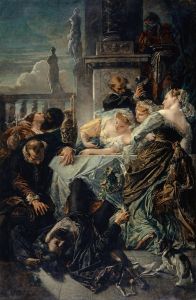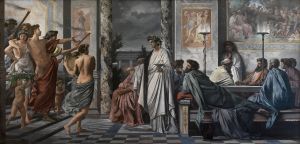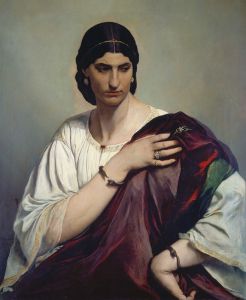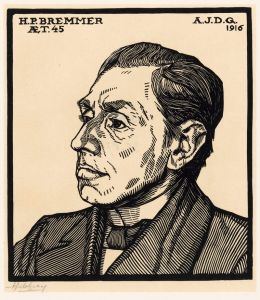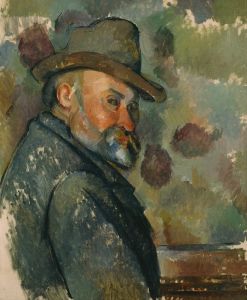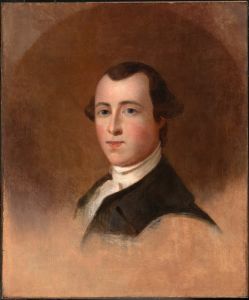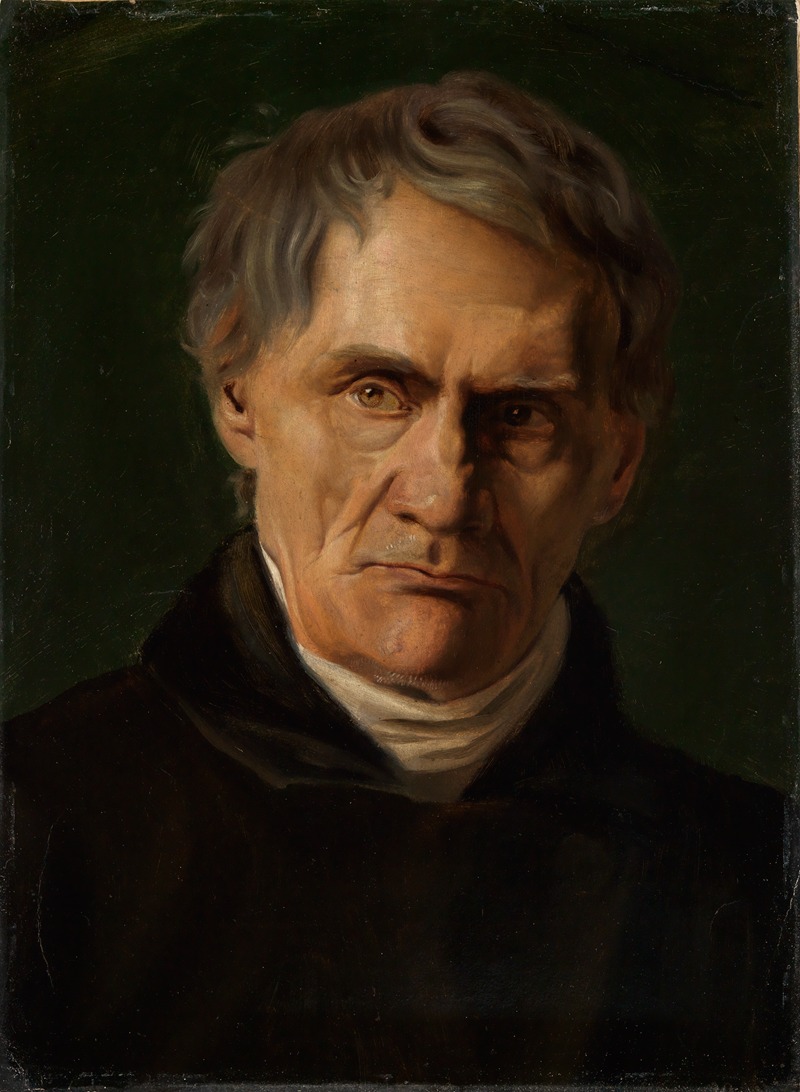
Bildnis eines älteren Herrn
A hand-painted replica of Anselm Feuerbach’s masterpiece Bildnis eines älteren Herrn, meticulously crafted by professional artists to capture the true essence of the original. Each piece is created with museum-quality canvas and rare mineral pigments, carefully painted by experienced artists with delicate brushstrokes and rich, layered colors to perfectly recreate the texture of the original artwork. Unlike machine-printed reproductions, this hand-painted version brings the painting to life, infused with the artist’s emotions and skill in every stroke. Whether for personal collection or home decoration, it instantly elevates the artistic atmosphere of any space.
Anselm Feuerbach was a prominent 19th-century German painter, known for his classical style and historical subjects. One of his works, "Bildnis eines älteren Herrn" (Portrait of an Older Gentleman), exemplifies his skill in portraiture, capturing the essence of his subject with a refined and realistic approach.
Feuerbach was born on September 12, 1829, in Speyer, Germany, into a family with a strong artistic and academic background. His father, Joseph Anselm Feuerbach, was a well-known archaeologist, which likely influenced Anselm's interest in classical themes. Feuerbach studied at various prestigious art institutions, including the Düsseldorf Academy and the Munich Academy, before moving to Paris to study under Thomas Couture. His time in Paris exposed him to the works of the Old Masters and the burgeoning Romantic movement, which would later influence his style.
"Bildnis eines älteren Herrn" is a testament to Feuerbach's ability to convey character and emotion through portraiture. Although specific details about the painting's creation and the identity of the sitter are not widely documented, the work is consistent with Feuerbach's broader oeuvre, which often focused on capturing the dignity and introspection of his subjects. The painting likely dates from the period when Feuerbach was active in Vienna or Rome, where he spent significant portions of his career.
Feuerbach's portraits are characterized by their subdued color palettes and emphasis on the psychological depth of the sitter. In "Bildnis eines älteren Herrn," Feuerbach employs a realistic style, paying careful attention to the details of the gentleman's features and attire. The background is typically understated, allowing the viewer to focus entirely on the subject. This approach reflects Feuerbach's classical training and his admiration for Renaissance and Baroque art, which often emphasized clarity and harmony.
Throughout his career, Feuerbach was associated with the German art movement known as the "Deutsch-Römer," a group of artists who sought inspiration from classical antiquity and the Italian Renaissance. His work was well-received in his lifetime, and he was appointed as a professor at the Academy of Fine Arts in Vienna in 1873. However, despite his success, Feuerbach often felt underappreciated compared to his contemporaries, such as Hans Makart.
Feuerbach's legacy is marked by his dedication to classical ideals and his influence on later generations of artists. His portraits, including "Bildnis eines älteren Herrn," continue to be appreciated for their technical skill and emotional depth. Feuerbach passed away on January 4, 1880, in Venice, Italy, but his work remains an important part of the 19th-century European art canon.
In summary, "Bildnis eines älteren Herrn" by Anselm Feuerbach is a fine example of 19th-century portraiture, reflecting the artist's classical influences and his ability to capture the essence of his subjects. While specific details about the painting are limited, it stands as a testament to Feuerbach's skill and his enduring impact on the art world.






